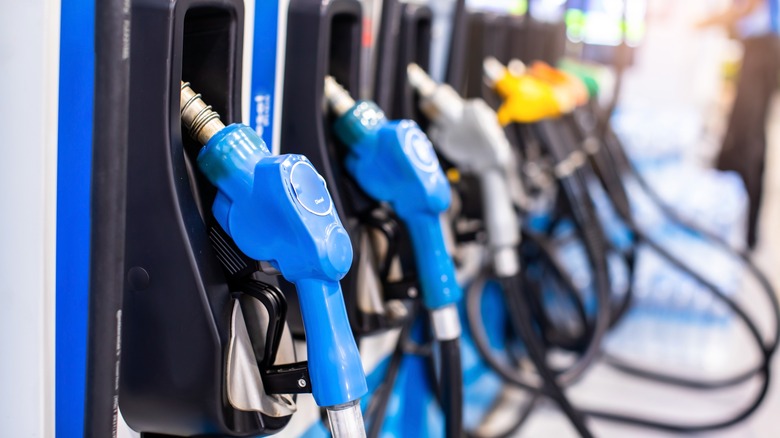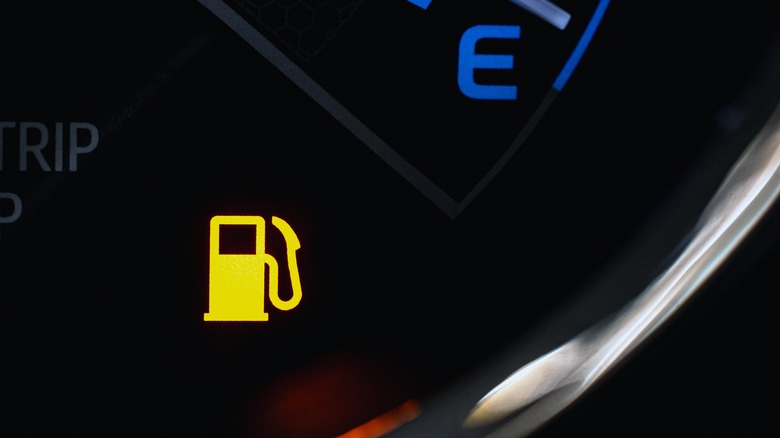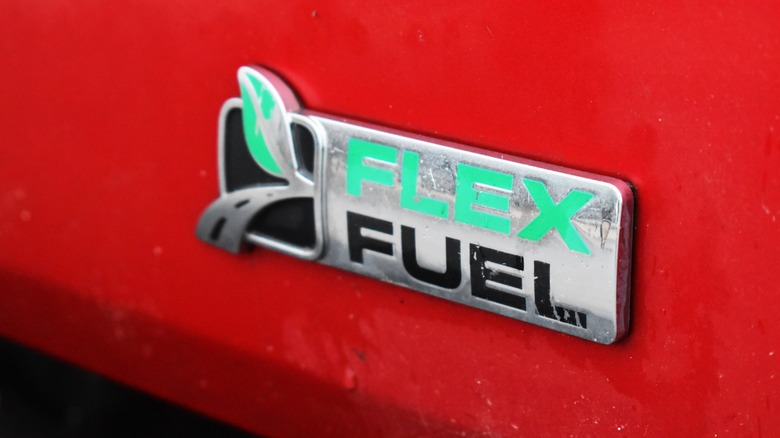What Is E85 Gas And How Is It Different From Regular Gas?
Fueling your vehicle is something drivers likely do at least once a week, and you're used to seeing regular, midgrade, and premium options. Although, there is a big myth about gasoline you need to stop believing, and it could save you money. According to the National Association of Convenience Stores, around 86% of drivers choose the 87-octane regular fuel, while only 13% opt for the more costly premium option.
Have you ever noticed a pump labeled "Biofuels," or E85? According to the U.S. Department of Energy, there are over 4,000 stations spread across 44 states that offer E85 gasoline. Be aware that this special blend of fuel is only compatible with certain vehicles, which might cause you to wonder if ethanol is really bad for your car's engine.
In some cases, you might find ethanol-free gas, but most commonly you'll see regular gasoline — which only contains about 10% ethanol in its composition and is symbolized as E10. E85 (also referred to as flex-fuel) includes much greater amounts of ethanol, between 51% and 83%. Ethanol is made from plants such as corn, barley, and sugar cane, among others. This collection of material is called "biomass," and it undergoes a process of sugar and starch fermentation before it's added to gasoline. The purpose of incorporating ethanol is that it adds oxygen to fuel and reduces the smog produced by tailpipe emissions.
E85 can be cheaper, but it's less efficient
Per the U.S. Department of Energy, April 2024 saw "national average retail prices for E85 were $0.69/gallon less than national average gasoline prices, with E85 prices lower in all regions except New England, where E85 was $0.11/gallon higher than gasoline."
The greatest disparity in price between flex-fuel and regular gas is found along the west coast, where E85 can be as much as $1.64/gallon cheaper. The cost savings at the pump for E85 are one reason why this biofuel has experienced so much popularity in California recently. In fact, California saw a 14% uptick in flex-fuel sales from 2022 to 2023, according to the Renewable Fuels Association.
While the reduced price per gallon for E85 makes it an attractive alternative, ethanol can't provide the same amount of energy per gallon as regular gasoline. With less energy production available in flex-fuel, you'll need to fill up your vehicle more often — a vehicle running E85 can expect a reduction of 25% in terms of mileage, according to J.D. Power.
Which vehicles offer flex-fuel and how much cleaner is it?
There are several auto manufacturer's making vehicles that can utilize both regular and E85 fuel. Ford for example, offers flex-fuel in several of its large vans and trucks such as the Transit Connect Cargo Van, Explorer SUV, and the F-Series pickup trucks. You can also find the alternate fuel technology in specific Chevy Silverado's, and GMC Sierra's. Some of these vehicles include a Flex Fuel badge along the side, which indicates you can fill up using either regular gas or E85 fuel, that contains greater amounts of ethanol.
In terms of emissions, E85's high ethanol content results in 45% less carbon dioxide-equivalent greenhouse gases, versus regular gasoline, per the Nebraska Corn Board. In addition, when E85 burns it doesn't leave the same harmful residue that is present when E10 fuels are used. The residue left by regular gasoline is a collection of chemicals like benzo(a)pyrene that could cause cancer or other ill-health effects upon exposure.


